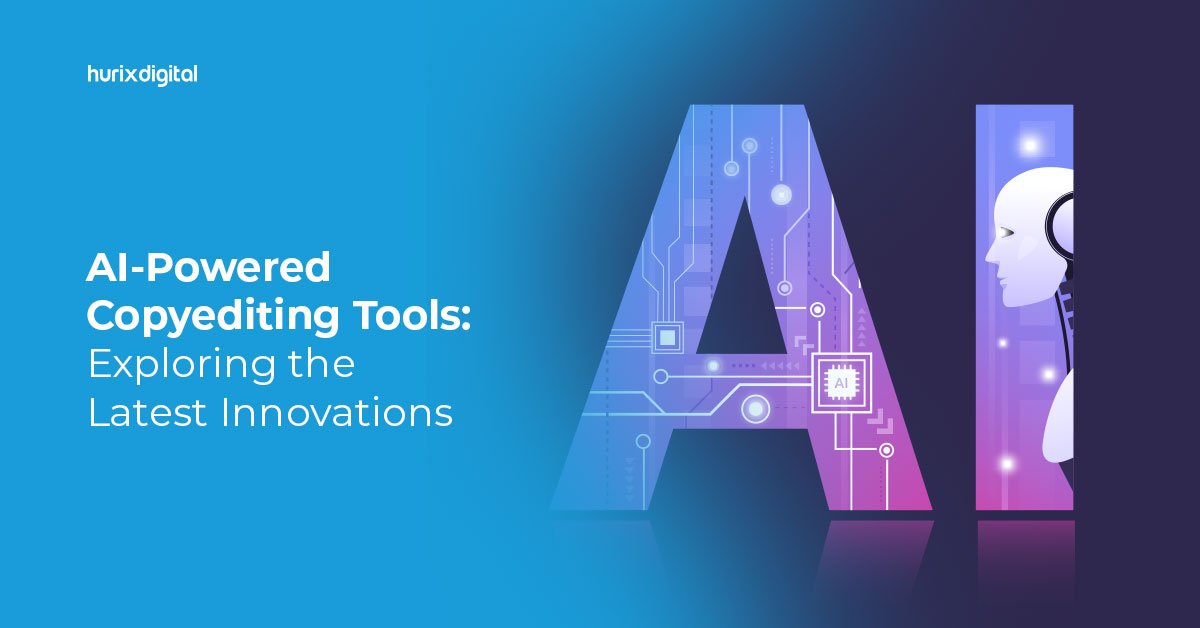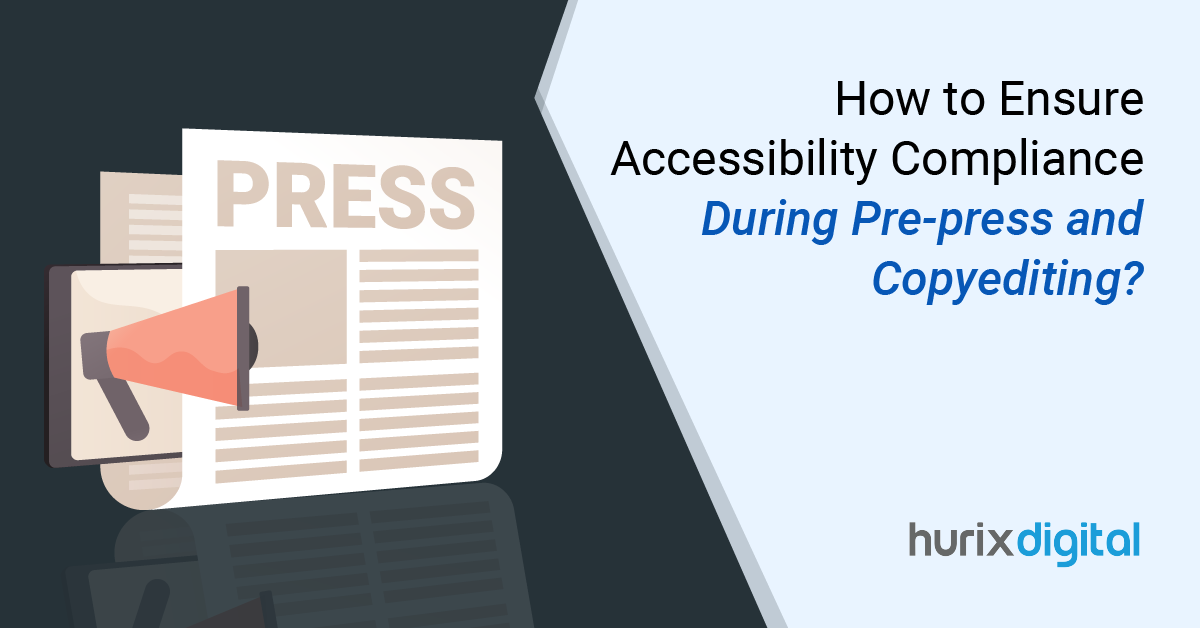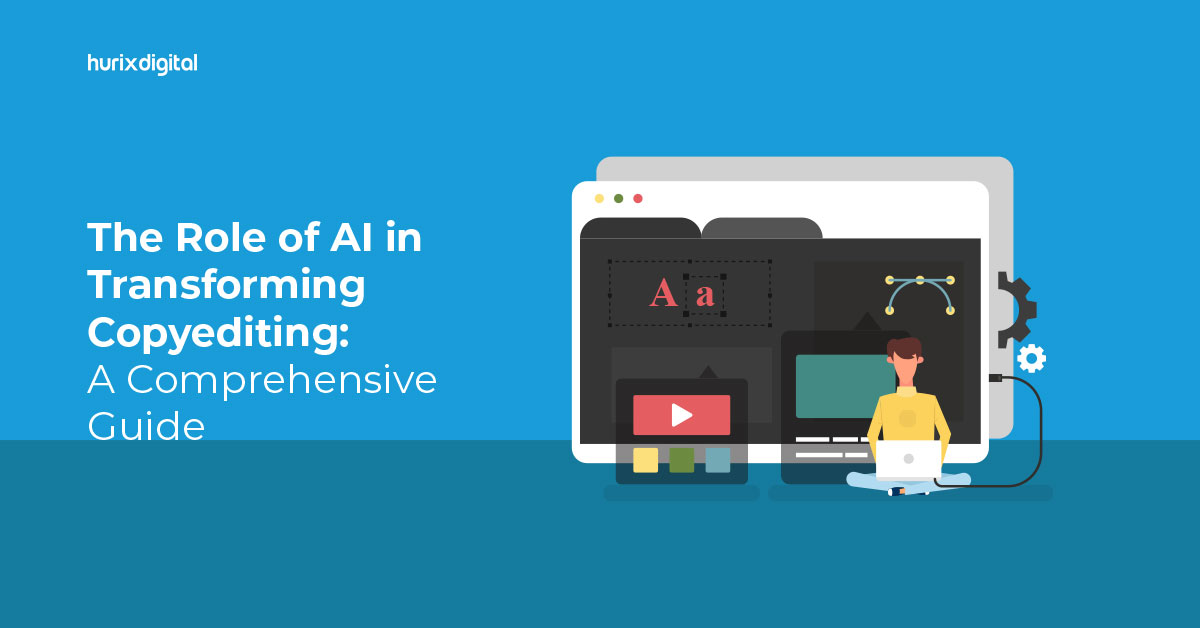
How to Leverage the 5 C’s of Copyediting for Organizational Impact?
Summary
The blog post explores the role of Artificial Intelligence (AI) in learning and development. It highlights how AI technologies, such as machine learning and natural language processing, can personalize learning experiences, automate assessments, provide intelligent recommendations, and enhance learner engagement. The post emphasizes the transformative potential of AI in revolutionizing learning and development practices.
A common belief today is that copyediting is just scanning words on a page. That is not true.
Copyediting is about refining messages, catching subtle errors, and making sure every piece of content excels and serves its purpose.
When you read an article or a report, and it flows smoothly while reading, chances are high that a copyeditor worked diligently to make sure that it happened. In the business of communication, ensuring the accuracy and quality of written material can make all the difference.
This article delves deeper into the nuances of copyediting. It attempts to shed light on its importance and how it can bring about a difference in organizational communication.
Table of Contents:
- What is Copyediting?
- What are the 5 C’s of Copyediting?
- Why Every Organization Needs Copyediting?
- Conclusion
What is Copyediting?
Copyediting goes beyond just spotting errors. It is a meticulous task. When we talk about editing content for the web, it’s a different ballgame. Online copyediting ensures content is tailored for this audience. It makes every word and sentence count.
Let’s talk specifically about specialists.
An academic copyeditor deals with papers filled with expert language and complex ideas. They ensure scholarly work remains intact. That does not mean that it is not approachable for a broader audience.
A copyeditor presents dense research in a digestible manner without bringing down its significance. Then, you have professional copy editors. Their arena is more vast. They deal with websites, ads, and corporate documents, among other things.
They ensure that the content is polished and primed for its intended audience. They refine the tone, check for consistency, and make sure the content aligns with the broader communication goals.
In both roles, the goal is clear: make the content the best version of itself, ready for its readers, irrespective of their background or expertise.
Also Read: Why Copyediting Should Be a Priority for Your Company
What are the 5 C’s of Copyediting?
If you are a writer or editor, you’re probably familiar with the “five Cs of good writing.”
While the Cs might change across different fields, five of these core principles comprise the fundamentals of powerful, effective technical writing. These are:
1. Clarity
When you’re trying to explain a concept, you won’t use jargon or over-complicated sentences. You’d be direct.
For instance, because passive voice is mainstream, you should use active voice wherever possible.
There’s another technique you can incorporate here: sentence structure. This involves placing important information at the beginning of a sentence.
This is also known as frontloading and helps in immediately informing the reader of the topic. This helps in ensuring that you avoid overwhelming the reader with unimportant details.
2. Consistency
Think back to your favorite TV series. Remember how jarring it was when a character suddenly changed, or the storyline took an unexplained turn? That’s how readers feel when content lacks consistency.
Whether it’s the tone, style, or even the format – uniformity is comforting. It’s familiar. Look for inconsistencies in content and style at every level of your textual output:
- In the format and form of headings and subheadings
- In the presentation of terms, names, definitions, tools, and methods
- In the use of units, variable names, and precision
In a world where brand identity can make or break a business, consistency ensures that your voice remains unmistakable amidst the noise.
3. Correctness
We all make mistakes. But here’s the thing: in the content world, these errors are like stumbling blocks. They make the reader double back and, worse, can dent your credibility.
Keep a running list of key phrases and definitions as you edit that will make it easier to spot any conflicting information. That way, if you do find any, you can either look up the correct usage or simply highlight it to the writer for change.
It’s about putting your best foot forward, error-free. It’s the silent guardian that ensures every ‘i’ is dotted and every ‘t’ is crossed, reinforcing the authenticity of your message.
4. Completeness
Most of the time, having direct communication with the writer and subject matter knowledge is necessary to ensure the paper’s content is complete. Particularly, non-technical editors will appreciate not having to decide whether the technical content of the paper is finished.
Aside from technical facts, editors might check for completeness by looking at the general organization of the article. The best course of action in such cases is to make sure the titles accurately and completely summarize the content and to make comments on any parts you believe are missing or out of order
5. Conciseness
We all skim-read, especially online. Writing that is technical or scientific by nature is complicated.
Consequently, a technical editor’s responsibility is to reduce this complexity as much as feasible. If a piece drags on, we lose interest. Conciseness isn’t just about being brief; it’s about valuing the reader’s time.
Copyeditors should try to enforce the following:
- A “one topic per sentence” rule
- Condense lengthy phrases
- Aim for an average sentence length of around 25 words
Why Every Organization Needs Copyediting?
Copyediting is a critical function that no corporation should overlook. Reasons being:
- Errors, big or small, are a part of writing. But, in a professional setting, they can make you wince. They can make readers question not just the writer’s but the entire organization’s attention to detail.
- Remember the last time you stumbled upon a poorly edited piece online? Perhaps the intent behind the content was powerful, but the execution was not. This takes away from the impact of the piece of content.
- Suddenly, the message takes a backseat, and the errors come to the forefront.
Think about when you’re scrolling on your phone, and a post stops you in your tracks. It stands out. It speaks to you. That’s the kind of quality content we aim for. Content that is not just about fixing typos.
Also Read: Copy Editing Services: What to Expect From a Professional Copy Editor
Conclusion
Copyediting is not just about grammar and punctuation. With platforms offering copyediting online, the process is more interactive and real-time. With the introduction of copyediting websites, delivering quality content is now easier.
Remember, the best copyediting services are not just about fixing errors; they’re about understanding the writer’s voice and the message behind the words.
For the scholars out there, academic copyediting is a game-changer. It makes those dense, intricate papers readable, understandable, and, most importantly, publication-ready.
So, the next time you’re drafting something and think about online copyediting, know that you’re tapping into a world of expertise, convenience, and quality.
With Hurix Digital, you get professional copyediting services with expertise in language as well as style to ensure that every project achieves results with high-quality standards.
Our copy editing team has expertise in style manuals such as APA, AMA, CMS, and ASA, to name a few. So get in touch with us today and take your copyediting to the next level.

Vice President – Digital Content Transformation. He is PMP, CSM, and CPACC certified and has 20+ years of experience in Project Management, Delivery Management, and managing the Offshore Development Centre (ODC).







